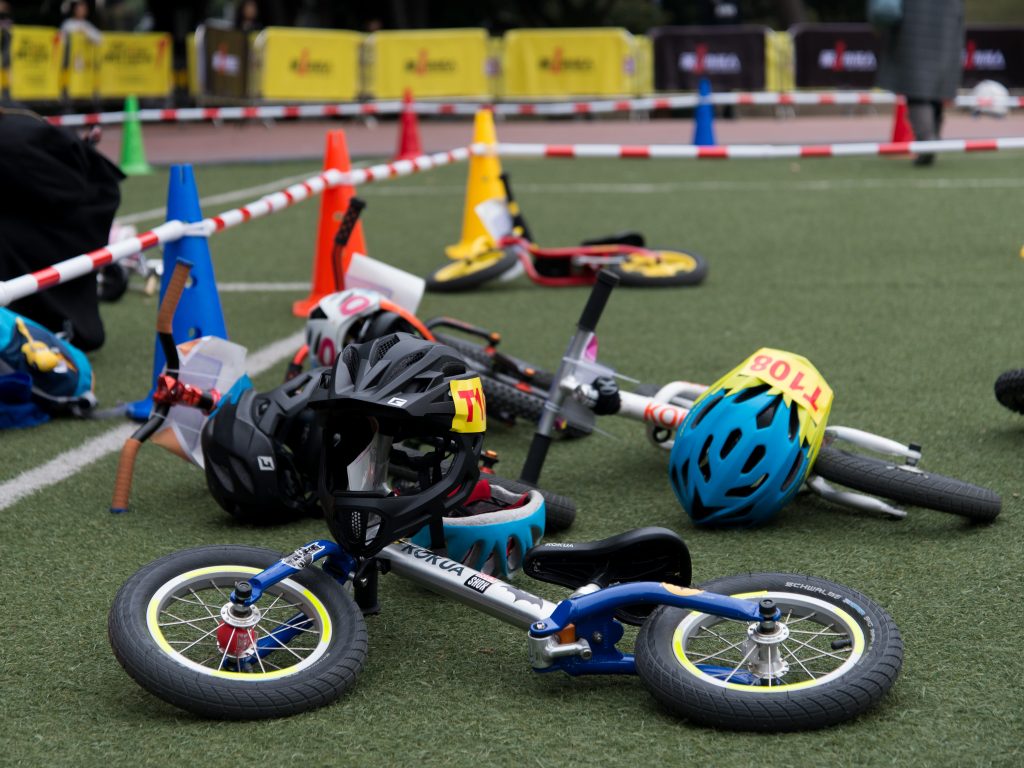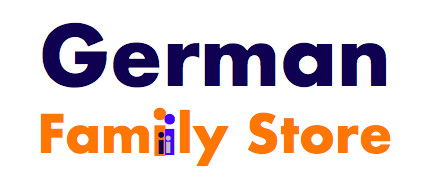
A balancing bike prepares your child to ride a bicycle and trains the sense of balance within your child. When it is time to look for a balancing bike for your child. Friendly speaking there is no exact age to start with.
It is time when your child has the needed body control and stability and is able to control the speed sufficiently. Another factor to look for is good eye hand coordination.
In addition, consider your child’s motoric development and height. Because your child is pushing his legs off the floor, as if it is walking, it is important that your child can stand and walk safely.
Besides the tips on how to find the right balancing bike, your child needs to fall in love with the bike and every time he wants to ride it. If you are not sure and have any doubt, simply go and try it out. To really make sure that the bike fits your child, have it do a test ride.
Safety
That your child is protected when he falls off, he should never ride without a helmet. Make it a rule to wear a helmet before leaving the house, because this will become even more important when riding a bicycle.
Professionals always wear protection!
Don’t forget knee and elbow protection and gloves.
By instinct your child will break with it’s feets. Best use old sturdy footwear when going on a ride. Sandals or open shoes are not the right choice to protect your child’s feets from injuries.
Size
Balance bikes come in different sizes. Their typical wheels are 12” to 14” in diameter. Where you need to look for when selecting a bike are frame size, seat height and handle height. Because your child needs enough clearance between the wheels. The bike should be not too big and not too small. It does not fit for the future it needs to fit now and need to give room to grow with your child.
When your child stands comfortable he should be able to sit on that height. And it should reach the handlebars comfortably while sitting on the seat.
Seat height
There should be room for adjustability of 5 cm to 7.5 cm clearance when your child is standing over the bike. An exchangeable post can be an option as well. The post should be made of solid material and neither bend or turn.
Handlebars
An adjustable handlebars will help your child to find the best position to ride the balance bike. Your child can ride it for a longer time, as the bike grows with your child. The handlebars should be made of solid material some as the pole.
Tires
The tires should be right for the area you are living and the type of riding you plan to do. For flat terrain solid foam and solid rubber tires are more suitable. Also when you plan to ride the bike in your flat. Off road or on a dirt road will be more suitable for traditional air inflated tires as driving with solid foam or rubber tires will be more exhausting.
An air inflated tire will give better support and cushioning on the ride. This comes on the cost of maintenance. Have a look at the correct air pressure when you leave home. And a repair kit and air pump comes handy on longer rides.
Frame
The material of the frame be it steel, aluminium, wood or plastic will affect the price, strength, look and weight of your balance bike.
Weight
Your child will be able to probably handle his balance bike as long the weight is about 25% or less of your child’s weight.
Look as well for the weight limit of the bike and that your child is not going to exceed it, including all cloth, shoes and protection gear.
Axels
The connections of the axes should always be fixed with metal screws.
Low entrance
Having the lowest possible entrance makes it easier for your child to get on and off his balance bike. If it’s easier to get on and off it will also reduce the barrier to use it.
Grips
The grips need to be small enough that your child get his hands around them and have a large section outside. The large section protects the hands of your child in case of falling or rubbing against walls and other sharp or rough surfaces.
Quality
Check for wobbling handlebars or tires with play. This should be avoided as far as possible. If the handlebars, the handlebars head or the axles of the wheels are wobbling your child gets an unsafe feeling and might avoid riding his bike. Beside safety reasons.
Breaks
The breaks should be easy to reach and pull without losing the contact to the grips of the handlebars. They are helping your child to get comfortable with them for the next upgrade to a bicycle.
Turning limiters
This is a topic that raised a lot of discussions. This is a topic of it’s own and you should weigh up the arguments. You are challenged to make a decision as to whether you prefer a model with a turning limiter or not.
Foot rests
A foot rest is a good option if you have flat slopes in your area and your child can go safe on a longer ride. Nevertheless they should not limit your child when walking with the bike or any other movements.
Accessories
A water bottle holder and small basket might be a good option you want to consider. Your child can stop any time for a sip of water or bring his favorite toy or snacks along.
Warranty
The last you want to do is to check what the warranty is covering, how long it covers for and what the process is to start a claim.
Now you should be able to select a balance bike for your child without hesitation.
Leave a comment what kind of balance bike you choose for your child and why?
Subscribe To Our Newsletter
Join our mailing list to receive the latest news and updates.

Recent Comments